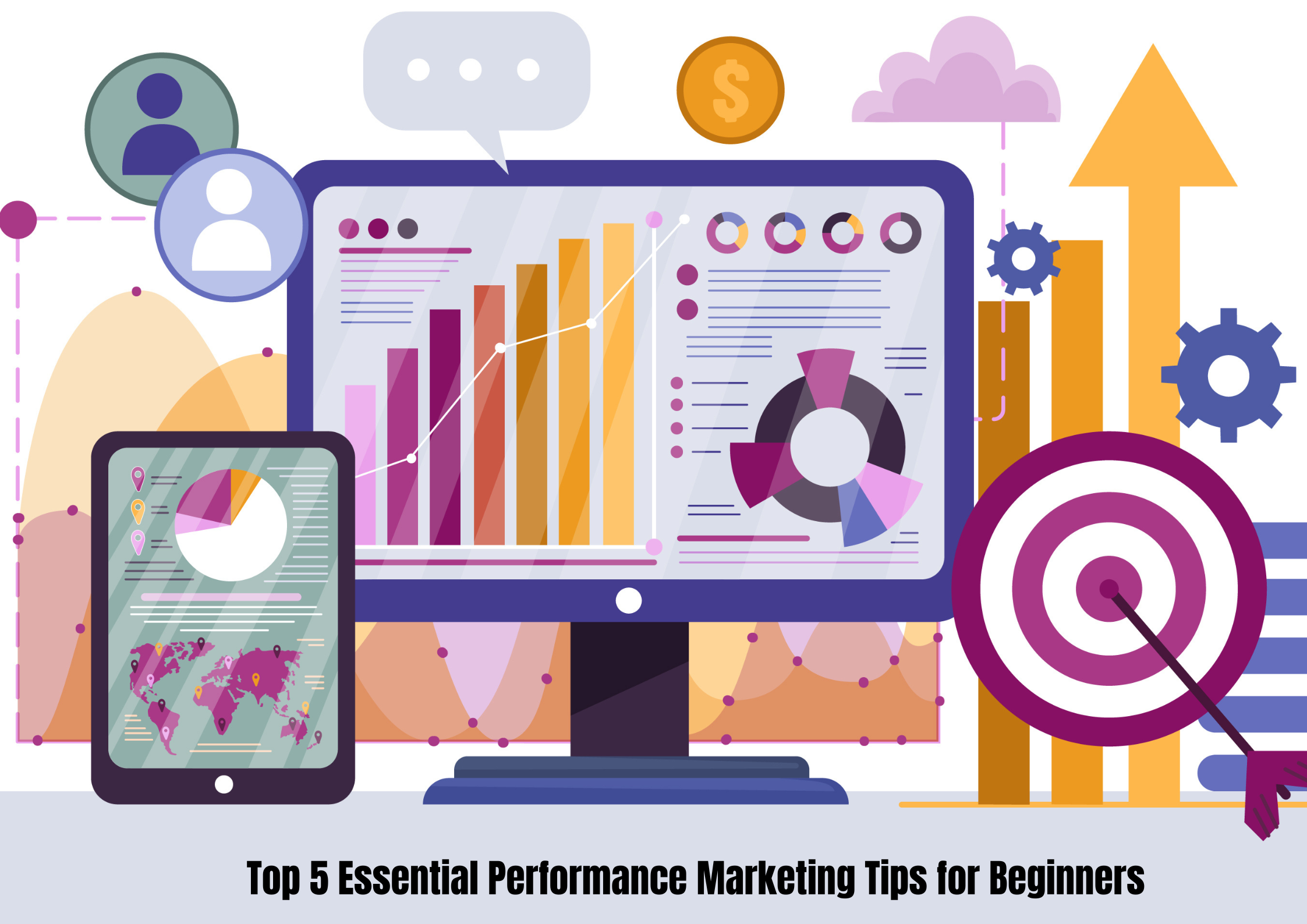In today’s competitive digital landscape, businesses and marketers are constantly search for ways to improve their return on investment (ROI) and drive measurable results. Performance marketing has emerged as one of the most effective ways to achieve this, as the focuses on delivering results and tracking key metrics. If you’re a budding performance marketer or are looking to understand the basics of performance marketing, you’ve come to the right place.
This beginner’s guide will walk you through the fundamentals of performance marketing, offering practical tips and best practices that you can implement to boost your marketing campaigns.
What is Performance Marketing?

Performance marketing refers to a type of digital marketing where advertisers pay for specific actions taken by the audience, such as clicks, conversions, sales, or leads. Unlike traditional marketing, which might involve spending money on ads with uncertain outcomes, performance marketing is focused on measurable results. This makes it a highly cost-effective approach for businesses of all sizes, as they only pay for successful outcomes.
In performance marketing, common channels include affiliate marketing, pay-per-click (PPC) advertising, social media advertising, and influencer marketing, among others. The key difference between performance marketing and other forms of marketing is that the focus is on achieving tangible results tied to specific performance metrics.
The Role of a Performance Marketer
A performance marketer is a digital marketing professional who specializes in driving measurable results through various marketing channels. Their goal is to optimize campaigns to deliver the best ROI by utilizing data, testing, and continuously refining strategies.
Performance marketers are responsible for the following:
Defining Key Performance Indicators (KPIs): Establishing measurable goals like clicks, conversions, sales, and leads.
Choosing the Right Channels: Deciding whether to use social media, search engines, affiliate programs, or other channels based on campaign goals.
Budget Allocation: Distributing the marketing budget across various channels to maximize ROI.
Tracking & Analysis: Constantly monitor campaign performance and adjust strategies as needed.
Optimizing Campaigns: Using data and A/B testing to refine campaigns for better results.
Key Tips for Performance Marketers
If you’re new to performance marketing, here are some essential tips to help you succeed:
1. Focus on Data-Driven Decisions
The foundation of performance marketing is data. As a performance marketer, your decisions should be based on solid analytics rather than intuition. Use tools like Google Analytics, Facebook Ads Manager, or other reporting platforms to track the performance of your campaigns. Analyze metrics such as:
Click-through rates (CTR)
Conversion rates
Cost per acquisition (CPA)
Return on ad spend (ROAS)
Customer lifetime value (CLV)
By understanding these metrics, you can identify what’s working and what needs adjustment in your campaigns.
2. Set Clear Goals and KPIs
A successful performance marketing always starts with clear goals. Whether you’re focusing on brand awareness, lead generation, or direct sales, ensure that you define your KPIs. For instance, if your goal is lead generation, your KPI might be the number of qualified leads you generate within a specific period.
Remember, your KPIs should align with the overall objectives of your business and be measurable over time.
3. Choose the Right Platforms

Different marketing channels yield different results. As a performance marketing, you need to select the right platform based on your target audience and campaign goals. Here are some options to consider:
Google Ads (PPC): Ideal for targeting users based on search intent, perfect for lead generation or product sales.
Facebook Ads: Great for targeting specific evidence and interests. Best for both lead generation and brand attention.
Affiliate Marketing: Partnering with affiliates who drive traffic and conversions on a commission-based model. This is an excellent choice for e-commerce businesses.
Influencer Marketing: Working with influencers who promote your brand in exchange for compensation or other perks. Influencers can help drive sales and increase visibility.
4. Optimize Landing Pages for Conversions
A high-quality, optimized landing page is crucial to the success of your performance marketing efforts. When users click on an ad, they should be directed to a landing page that is relevant, visually appealing, and designed to drive conversions.
Ensure that your landing page:
Has a clear call-to-action (CTA)
Loads quickly
Is mobile-responsive
Provides valuable information relevant to the ad the user clicked
Has a simple and user-friendly design
The smoother the user experience on the landing page, the higher the likelihood of converting the visitor into a lead or customer.
5. Leverage Retargeting

Retargeting is an effective technique for performance marketers, as it allows you to target users who have already interacted with your brand but did not convert. By serving ads to these users again, you can increase your chances of turning them into paying customers.
Platforms like Facebook, Google, and others provide robust retargeting options that let you follow up with visitors who abandon their carts, engage with your website, or interact with your content.
Best Practices for Performance Marketers
1. Keep Learning and Stay Updated
The digital marketing landscape is constantly evolving, as a performance marketer, it’s essential to keep up with the latest trends , the tools, and techniques. Follow in blogs, attend webinars, and participate in industry events to stay informed
2. Communicate Effectively with Your Team
Collaboration is the key to success Performance Marketing Tips for Beginners campaign. Whether you’re working with designers, copywriters, or developers, ensure that everyone is aligned with the campaign goals and timeline. Open communication leads to smoother execution and better results.
3.Click Through Rate:Top 5 Mistakes That Ruin Ad Performance
Click-through rate (CTR) measures user engagement by tracking how often viewers click on links versus how many see them.
Conclusion
Performance marketing offers a wealth of opportunities for marketers who are willing to dive into data, analyze results, and optimize their campaigns. As a performance marketer, your focus on measurable results, efficient budget allocation, and continuous testing will lead you toward success. By following the tips and best practices outlined in this guide, you’ll be well on your way to running successful, high-performing campaigns that drive tangible results. Remember, the key is to always keep in the learning and adapting to the ever-changing world of the performance marketing.
Happy marketing!











Leave A Comment